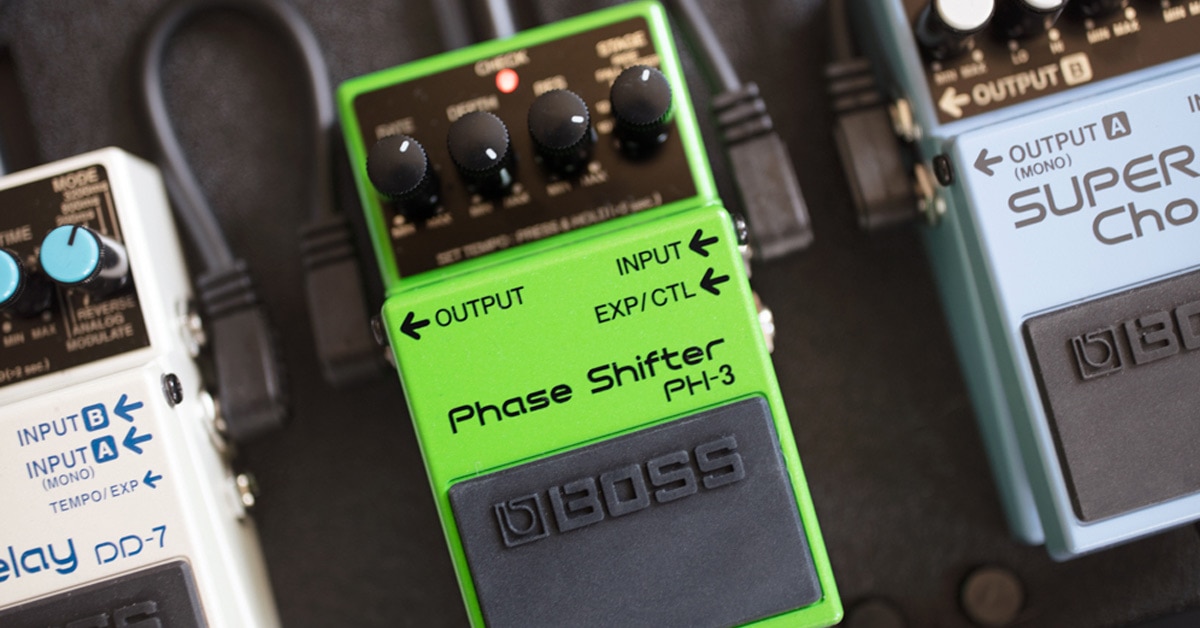Need some help getting the most out of your guitar pedals? There are tons to choose from, they're available at a range of price points and they can have a direct and immediate impact on your tone. But getting your distortion, chorus, wah, delay, and volume pedal to work together with the best sound and as little noise as possible can be quite the challenge. Let’s talk about how these (and other) different types of effects complement each other and how you can optimize your signal chain to keep your thrash free of trash.
First we'll tackle the issue of noise. A certain level of noise exists in all effects pedals, but is easily managed by balancing the input and output levels. Let's take Pedal A and Pedal B, for example. If the signal coming out of Pedal A is too low, you'll find yourself boosting the input gain of Pedal B to have a loud enough signal. When you do this, you amplify any background noise as well! To take care of the problem, always make sure the signal coming out of one pedal has enough juice to drive the next pedal. This is also known as gain staging and is one of the most important things you can do to ensure your tone is as pure as possible.
When it comes to tone shaping, there are a lot of opinions as to which effect feeds another, and it is ultimately a matter of personal taste. Fortunately, there are some guidelines that will help you get the most from your pedal collection.
Lets start with the basic effects chain that we've found works well. In order, from guitar to amp: compression - distortion - pitch - EQ - delay - volume. We'll break this list down so we can see why this particular setup works.
Compression is generally the first effect in the chain for good reason. By compressing the signal, you are able to feed a fairly strong and consistent signal to the rest of the stompboxes’ processors. Too little level at the beginning, and you'll end up with way too much hiss at the end. Some people even like to put an additional compressor at the end of the chain to reign in any overly strong peaks that may have built up in between.

Compression stomps like the BOSS CS-3 Compression Sustainer usually belong at the front or the end of your effects signal chain, but rarely in between.
Distortion, whether it's sweet tube saturation or raw shred, works well in the next position because it adds to the harmonic content of the input signal, giving subsequent processors something juicy to bite on. The end result will be more pronounced and compelling. Some players will put a noise gate after the distortion to tame some of the undesired grunge that creeps in at the tail end of a note.

The Electro-Harmonix Big Muff Pi has 3 controls that let you dial in some legendarily fuzzy distortion.
Pitch effects, like harmonization or thickening, come next. Like distortion, these will add more harmonic depth to the sound. You'll also end up with a clearer, more open tone if you harmonize already-distorted sound than if you fuzz up multiple pitches.
Now that you've got a nice foundation to work from, add in EQ effects like a wah pedal. As you sweep the wah pedal, you pass through all that nice harmonic richness that's built up. As a result, you will be able to coax some very expressive, almost vocal tones out of your guitar.
As we near the end of the chain, things get a little more relaxed. Normally, you add delay (echo, reverb, flange, etc.), and then finish it off with volume control to manage the final output. However, you can also make a case for using a volume pedal before the delay stage for some really creative swells and fades.
As with all things musical, your ears are the final authority. Don't be afraid to experiment: plug your volume pedal into your harmonizer, and then into your Tube Screamer, and listen! Nothing will break, fry, or explode. The worst that could happen is you won't like the sound, but the fix is just a patch cord away!
Experimentation is absolutely critical and sometimes breaking the rules can yield surprisingly cool results. For a slightly different take on integrating your compressor into your pedal board daisy chain, check out out this tech tip.
And for the (nearly) final word on perfect pedal order, our webinar with shredmaster Steve Vai is a must-see.
Steve Vai emphasizes the need to experiment while also laying down some rules of thumb that he then demos.







































































































































